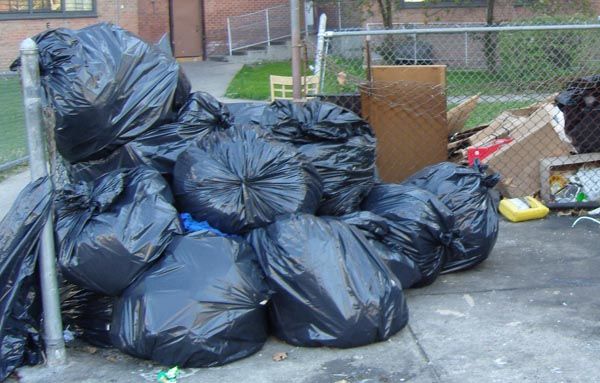This piece originally ran on City Limits.
Coverage of Mayor Bloomberg’s state of the city address focused, as the speech did, on the mayor’s raft of education proposals, with some additional attention to his mentions of police corruption and the minimum wage.
But the mayor’s reference to a once-controversial notion—“the possibility of cleanly converting trash into renewable energy”—passed all but unnoticed.
That’s probably because the administration and its allies have been moving for months toward reconsidering “waste-to-energy” as a potential solution to the city’s intertwined fiscal, garbage and energy problems.
But the inclusion of the idea in the mayor’s signature annual policy speech, at a time when New York State is grappling with whether to allow fracking or close the Indian Point nuclear power plant, is still a big deal.
New impetus to an old idea
Toward the end of his 7,500-word speech the mayor said the city will, over the next year, “explore the possibility of cleanly converting trash into renewable energy.”
New York City used to burn a lot of its trash, but it began moving away from the practice in the 1960s when it became obvious that it was a bad idea. As early as 2002, the Bloomberg administration expressed interested in the idea of waste-to-energy as a cost-saving device, and it studied the idea around the time that the mayor’s landmark 2006 solid waste management plan passed. The update to PlaNYC issued last Spring vowed to “analyze opportunities to use new conversion technologies as commercially viable alternatives to landfilling” and the New York League of Conservation Voters, an ally of the mayor’s, held a forum on the idea last month.
The core of the argument for waste-to-energy hasn’t changed much since 2002: The city spends a lot of money and produces a lot of greenhouse gasses trucking its garbage out of state to landfills, and it would save some of that money by finding a way to get rid of the trash here.
But when it comes to the energy-producing benefits of such a move, the stakes have increased drastically. The Iraq war, “An Inconvenient Truth,” Deepwater Horizon and Fukashima Daiichi have transformed intelligent conversation about energy use.
Just this week, the state assembly held a hearing about closing the Indian Point nuclear plant to eliminate the risk of an atomic accident affecting the densest area in the U.S. To the question of how to replace the energy from Indian Point— given that separate environmental concerns in 2009 torpedoed a plan to improve long-range transmission infrastructure—some pointed to the potential for new plants in the city itself.
This optimism rested in part on how cheap natural gas is these days, a fact not unrelated to the debate over using hydraulic fracturing to harvest natural gas in upstate New York. So Indian Point, fracking and power plants in the city are all knotted together, like the cords snaking our from that power strip under your desk.
Terminology clouds hopes, worries
That menu of difficult choices frames the renewed debate over waste-to-energy.
To be clear, it’s not like WTE is the only idea the mayor put forward. He also wants to double the city’s dismal recycling rate to 30 percent by “taking steps like increasing recycling in schools and streets and expanding our plastics recycling program.” But even if that push succeeds, the vast majority of the city’s waste will end up in trash bins. And that, says NYLCV’s Dan Hendrick, is why waste-to-energy deserves a second look.
“Right now we truck so much waste out to distant landfills every day. With tipping fees going up, with the price of gas kind of all over the place but generally high, the city is spending a lot of money trucking garbage back and forth,” he notes, adding that all those truck trips mean lots of greenhouse gases. “There’s got to be a smarter way that we can do this. The technologies have changed so dramatically around waste-to-energy in recent years. We’re able to take a fresh look at it at this point.” He adds: “The bottom line is it could save the city significant resources.”
What’s under consideration now is not a program of throwing the city’s trash into an old-fashioned incinerator, tossing in a match and breathing carefully. Among the new waste-to-energy options are “thermal processing,” which involves heating garbage to a point where its organic ingredients release a gas that can then be used like natural gas, and “anaerobic digestion” that uses microbes to decompose garbage, releasing vapor for burning.
That both these processes (and dozens more, including conventional incineration) fall under the “waste-to-energy” umbrella is problematic, because a broader segment of the environmental community may embrace some WTE technologies than others.
“There are some technologies that bear a look and might possibly be worth exploring, like anaerobic digestion,” says Eddie Bautista, the executive director of the New York City Environmental Justice Alliance. “When it comes to ‘thermal processing’ – this is essentially just new fangled incineration. If you’re taking a waste stream and you’re superheating it, then its incineration. Let’s call it what it is.”
Bautista, whose organization supports closing Indian Point even though it is likely to put new pressure on low-income New York City neighborhoods to accept power-producing plants, acknowledges that the concerns about city spending and greenhouse gas emissions are important. But, he says, they aren’t dispositive.
Some technology might reduce carbon dioxide, methane and other greenhouse gases but increase so-called co-pollutants that are associated with asthma and other local health concerns. Cost concerns also have their limits. “If all we cared about was the cheapest solution, we would have kept Fresh Kills open,” he says.
















